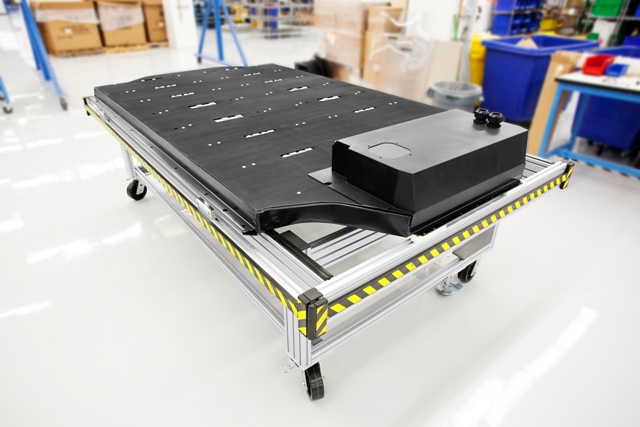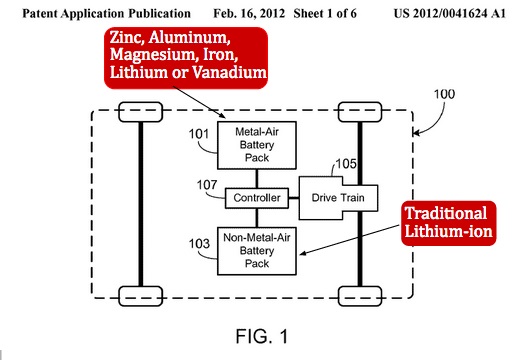Most advocates and industry analysts expect lithium-ion batteries to dominate electric-car energy storage for the rest of this decade.
But is Silicon Valley startup carmaker Tesla Motors [NSDQ:TSLA] planning to add a new type of battery to increase the range of its electric cars?
The high-end 2013 Tesla Model S with an 85-kilowatt-hour lithium-ion battery pack is EPA-rated at 265 miles of range.
(Real-world range can be lower, depending on a number of factors, including temperature, speed, and driving style.)
8 patent applications
But as a commenter on the Tesla Motors forum and a recent article on the stock investing site SeekingAlpha have noted, Tesla has filed for eight separate patents on uses of metal-air battery technology.
Take, for instance, "Efficient Dual Source Battery Pack System for an Electric Vehicle," which is Tesla's patent application # 20120041625.
Two of the three names on the application are JB Straubel, Tesla's chief technical officer, and Kurt Kelty, its lead battery engineer.
The metals covered for use in the metal-air battery are aluminum, iron, lithium, magnesium, vanadium, and zinc.
First and second battery packs
The application's abstract includes the following summary:
A method of optimizing the operation of the power source of an electric vehicle is provided, where the power source is comprised of a first battery pack (e.g., a non-metal-air battery pack) and a second battery pack (e.g., a metal-air battery pack).
The power source is optimized to minimize use of the least efficient battery pack (e.g., the second battery pack) while ensuring that the electric vehicle has sufficient power to traverse the expected travel distance before the next battery charging cycle.

Tesla Motors - Model S lithium-ion battery pack
In other words, a presumably lithium-ion pack for everyday use and a supplemental metal-air battery for longer range when needed.
Another patent application, Electric Vehicle Extended Range Hybrid Battery Pack System, says:
The second battery pack may be used to charge the first battery pack or used in combination with the first battery pack to supply operational power to the electric vehicle.
1,000 miles of range
Metal-air batteries, some of which slowly consume their anodes to give off energy, hit the news last month when Israeli startup Phinergy demonstrated its prototype battery and let reporters drive a test vehicle fitted with the energy-storage device.
Mounted in a subcompact demonstration car, Phinergy's aluminum-air battery provides 1,000 miles of range, it said, and requires refills of distilled water (which acts as electrolyte in the cells) about every 200 miles.

Diagram from Tesla Motors patent application for dual battery packs including metal-air battery
Once the aluminum plates are consumed, they must be replaced--a task Phinergy didn't discuss in any detail.
Production in 2017?
Phinergy CEO Aviv Tzidon told Bloomberg reporter Elliott Gotkine last month that his company has signed a contract with a global automaker to deliver the battery in production volumes, starting in 2017.
He didn't name the company, and Tesla does not say much about its future products (occasional tweets from its CEO Elon Musk aside).
But for Tesla, combining the acceleration provided by a lithium-ion battery with the longer range offered by a consumable aluminum-air battery might permit future vehicles that offer the responsiveness of the Model S with even longer range when needed.
We can dream, anyhow.
+++++++++++













